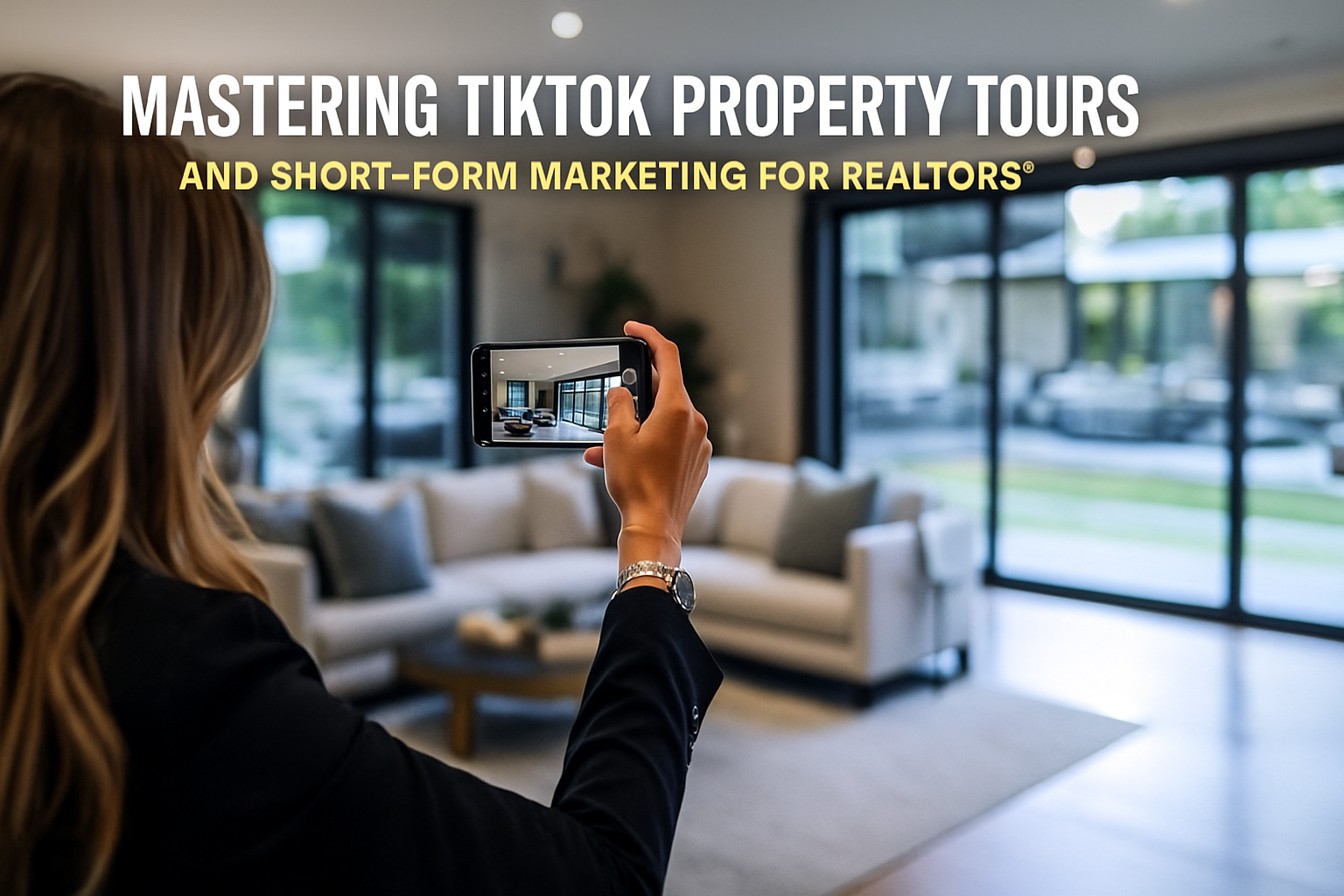7 Steps to Ensure Your Speaker’s Message Aligns with Your Real Estate Company Values
Learn how real estate leaders can vet, align, and integrate outside speakers to reinforce company culture and drive lasting team impact — not confusion.
Let’s Talk About That One Event That Didn’t Land
You booked a speaker. The team showed up. The energy was there. And then…
The speaker starts talking about high-pressure sales tactics, solo success stories, and “crushing it” at all costs.
And your agents? They start shifting in their seats. That uncomfortable kind of shifting.
By the time it’s over, your culture feels like it took a hit—not a lift.
I’ve seen this happen more times than I can count. Not because the speaker was bad—but because they were misaligned.
And in real estate, where culture is everything, a misaligned message doesn’t just fall flat—it creates doubt, churn, and damage that lasts long after the applause ends.
I’m Emily Terrell, the #1 Real Estate Coach and Speaker at Tom Ferry—the #1 Coaching Company in the World—and a leading strategist for AI, systems, and culture in the real estate space. I coach agents and leaders across the U.S., and today, I want to show you how to avoid the biggest mistake I see with brokerage events: inviting speakers who unintentionally contradict your company’s values.
Let’s walk through a better way.
The Real Problem: When Speakers Undermine Culture
Here’s the reality: A poorly matched speaker doesn’t just “miss the mark.”
They:
- Create tension between leadership and agents
- Derail your intended message
- Reduce agent engagement with coaching and training
- Hurt recruiting momentum
You worked hard to build a collaborative, values-based culture. One keynote shouldn’t undo that.
And yet, too many team leaders prioritize charisma over culture when hiring speakers.
That’s why I created the ALIGN Framework—a system I use with brokers, team leaders, and event organizers to make sure every message on stage reinforces the message in the office.
The ALIGN Framework: A 7-Step System to Vet, Guide, and Reinforce Speaker Messaging
Step 1: Articulate Your Company’s Core Values (Clearly and Behaviorally)
Before you can ask a speaker to support your values, you need to define them beyond a poster in the breakroom.
Your values must be operational, not aspirational.
Tactical Action:
- Choose your 3–5 non-negotiable values
- Write behavioral definitions for each (What does “collaboration” look like?)
- Turn this into a one-page Culture Brief to send to potential speakers
Example:
A brokerage in Dallas had “integrity” and “collaboration” as core values. But when we reviewed their speaker onboarding, they had never defined what those words meant behaviorally. After rewriting their values into specific, observable actions, speaker satisfaction among agents rose by 20%—because speakers could finally reflect what mattered.
Step 2: Leverage the Right Speaker Vetting Process
Don’t be blinded by audience size or follower count. You’re not hiring for entertainment. You’re hiring for alignment.
What to Review:
- Previous talks or video clips
- Podcast interviews
- Social media language and tone
- Testimonials from similar real estate events
Use a Speaker Fit Matrix:
| Criteria | Red Flag Example | Green Flag Example |
| Tone and Language | Uses hustle culture clichés | Speaks with integrity, systems, team success |
| Calls to Action | Pushes extreme independence or vanity metrics | Encourages values-aligned action |
| Experience | No real estate background | Has worked with teams/brokerages before |
Insight:
According to a Tom Ferry internal survey, agent satisfaction with training events increases by 38% when the speaker shares the company’s values—even if they’re not “famous.”
Step 3: Integrate Collaboration Before the Event
Speakers do their best work when they’re included in the planning process—not handed a mic and told to “do your thing.”
Your Pre-Event Checklist:
- Hold a pre-call briefing (30–60 minutes)
- Share your Culture Brief and key demographics (agent experience level, market type, team structure)
- Review current pain points (recruiting, retention, growth stalls)
- Ask to preview their outline or sample slides
- Offer early, specific feedback—not last-minute rewrites
Real Story:
I was hired by a team in California to keynote their annual kickoff. Because we collaborated early, I was able to infuse their recruiting messaging and retention struggles directly into my talk. The feedback afterward? “That felt like she worked here.”
Step 4: Guide the Message: Story, Tone, and Tactics
Even great speakers default to their default—unless you guide them.
How to Align Messaging:
- Swap generic stories for team-specific wins
- Ask for case studies that mirror your company’s model
- Check for language that contradicts your leadership philosophy
- Make sure the CTA matches your cultural focus
Example:
At a Phoenix event, one slide in a speaker’s deck celebrated solo performance above all else. After review, we reworded it to spotlight “Top teams and their systems”—realigning the entire segment with the company’s value of collaboration.
Step 5: Navigate Rehearsals and Real-Time Tweaks
If you skip the run-through, you’re asking for surprises.
Before They Take the Stage:
- Appoint 1–2 “Culture Stewards” to watch rehearsals
- Focus on tone, not just slides
- Ask: “Does this message move us closer to our mission?”
Quick Fix Example:
One speaker used the phrase “be the lone wolf” in their closing. We changed it to “stand out by lifting others”—a subtle but powerful shift that protected the message and the mission.
Step 6: Track the Results—Culturally
Clapping is not a metric. You need post-event data.
Use These Survey Questions:
- Did the speaker reflect our company’s values?
- What message stood out—and why?
- What’s one action you’re inspired to take?
Behavioral Indicators to Track:
- Increase in mentorship pairings
- More engagement in Slack/Workplace/CRM forums
- Referrals or agent recruitment conversations tied to the talk
Step 7: Reinforce the Message Over Time
A speaker is a spark. You’re responsible for the fire.
Reinforcement Tactics:
- Clip short takeaways into bite-size video training
- Quote speaker insights in your team newsletter
- Build an onboarding module from the keynote
- Invite the speaker for a follow-up webinar or virtual Q&A
Why This Matters:
Agents don’t just remember messages. They remember momentum. And when your leadership amplifies aligned messaging, culture sticks.
FAQs: How to Pick the Right Real Estate Speaker
Q: What’s the most important thing to ask a potential speaker?
A: Ask: “Can you show me an example where your message adapted to a team’s culture?” You’re looking for flexibility and humility, not just presentation skill.
Q: What if the speaker is a big name, but not quite aligned?
A: Pass. One poorly aligned talk can unravel six months of culture-building. No name is worth that cost.
Q: How do I know if the speaker reinforced our values?
A: Use targeted survey questions and behavior metrics (team participation, tool usage, Slack engagement) to see if your culture grew stronger after the event.
Q: Can AI help evaluate speaker fit?
A: Yes. AI tools can analyze tone, topic consistency, and alignment across public content to surface potential misalignment early.
Q: What if I’m the speaker—how can I better align my talks?
A: Do what great speakers do: research the company deeply, meet with leadership, adapt your examples, and make your CTA actionable inside their culture—not just your own.
Additional Resources
Want to Go Deeper? Explore These:
- How to Build a Coaching Culture in Real Estate
- What to Look For in a Real Estate Keynote Speaker
- WeeklyRealEstatePrompts.com — For AI-powered messaging, recruiting, and content that aligns with your values
- Follow @coachemilyterrell on Instagram
- Visit www.coachemilyterrell.com for speaking inquiries, frameworks, and tools
Final Thoughts: Culture Is Reinforced in Public
Every speaker you bring in, every message you endorse, and every story told from your stage is a reflection of your leadership.
So don’t just ask: “Will this speaker be good?”
Ask:
- Will they reflect our values?
- Will they speak into our mission?
- Will our team feel more aligned when they leave?
Because when the answer is yes—you don’t just host a training. You build a movement.
Let me know if this resonates—or DM me your next speaker question. I’d love to help you protect what you’re building.









